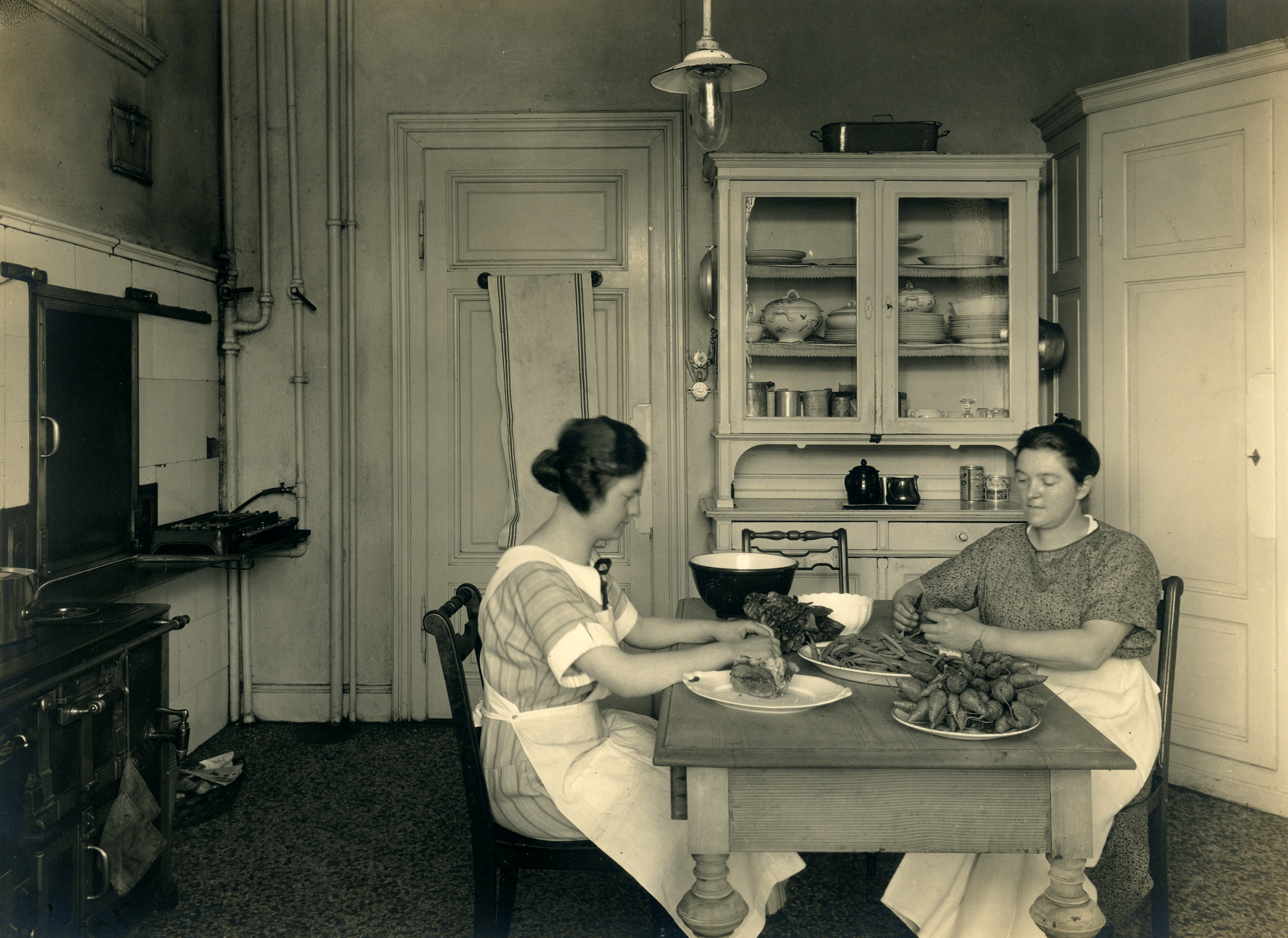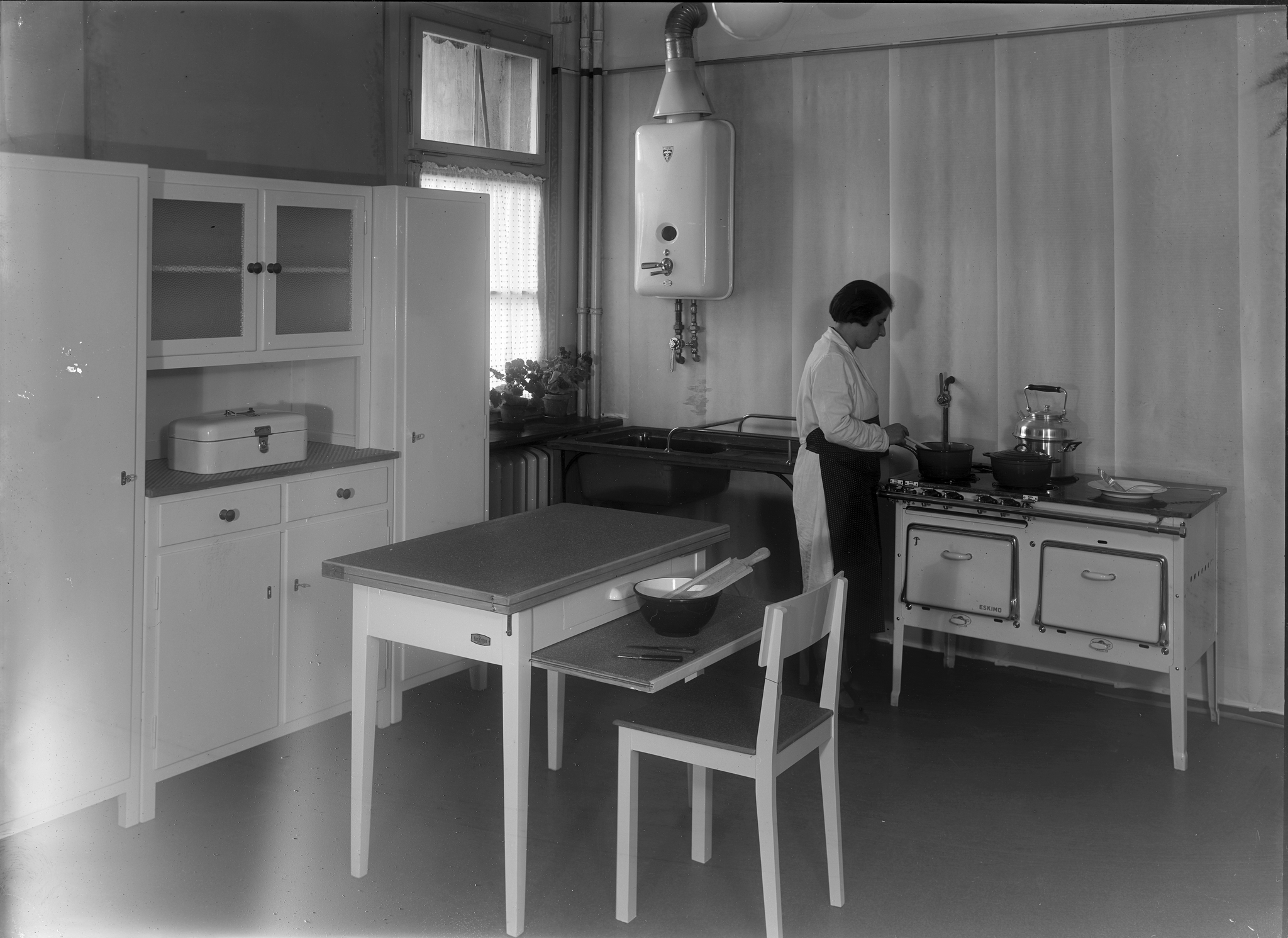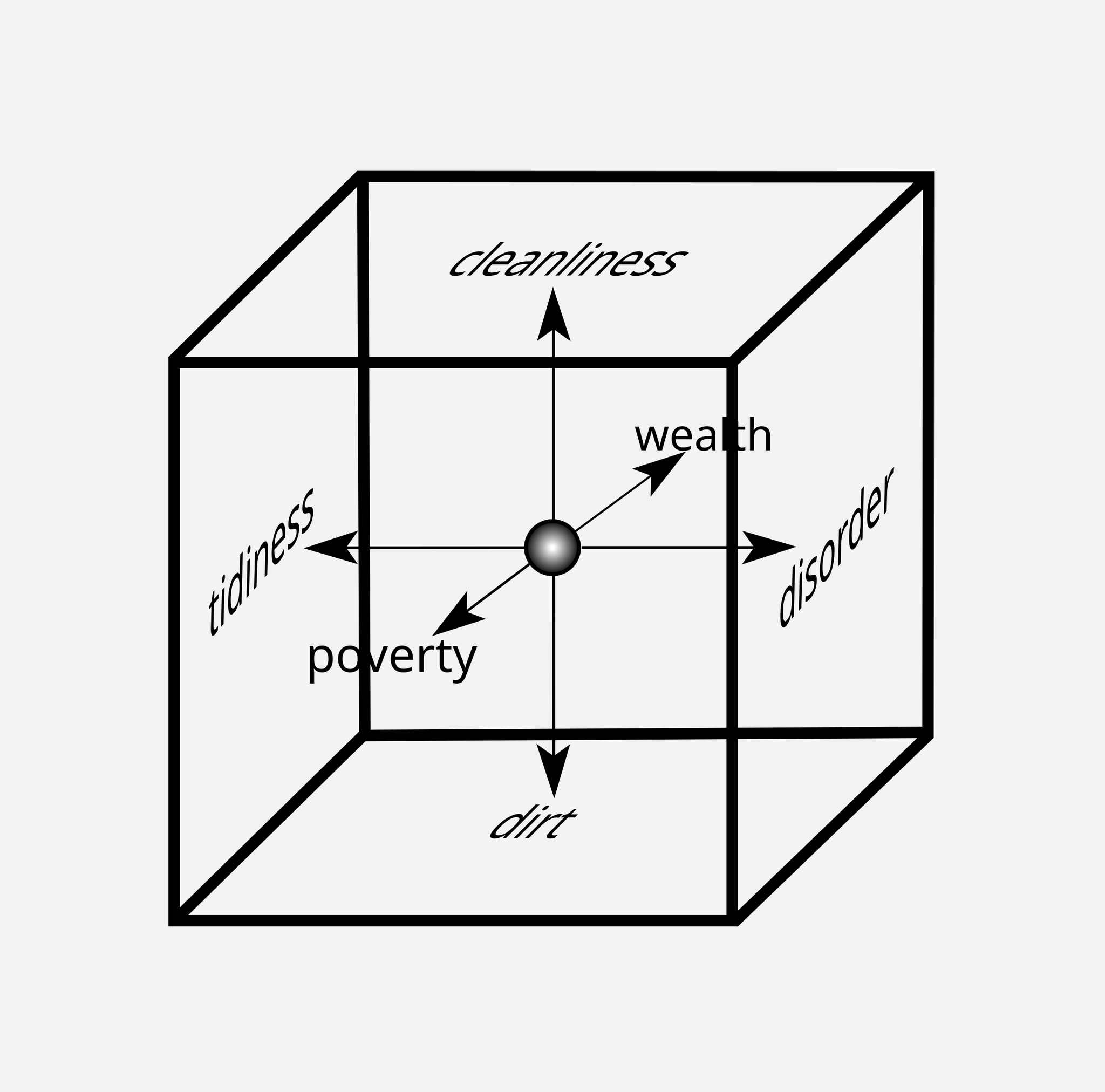Milieus, milieu descriptions and their visualization in film
In almost all historical films, poverty is visualized by dirt and disorder, whereas wealth or prosperity is visualized by cleanliness and order. This highly problematic and at the same time defamatory connection merely ties in with unconscious and often unconscious, albeit completely false, judgments. The idea that poor people are always dirty and untidy, while rich people are always clean and tidy, is fundamentally wrong, both in the present and in the past.
Embroidered sayings as wall decorations with inscriptions such as „Ordnung und Reinheit ist die beste Zierde des Hauses“ („Order and purity is the best decoration of the house“), „Blitzblank und rein muss Deine Küche sein“ („Your kitchen must be spotless and clean“) or „Ordnung ist des Hauses Zierde“ („Order is the decoration of the house“) from the late 19th and early 20th centuries are eloquent testimony to the aspirations of poorer people from this period in particular not to conform to these prejudices, which were as widespread then as they are today.
Poverty does not necessarily go hand in hand with uncleanliness and disorder, just as wealth is not necessarily associated with cleanliness and order, whereby the ideas of what cleanliness and order are are also subject to change and are interpreted differently in different times.


The German author Hans Fallada provides a very vivid and revealing example of this in his 1932 novel „Kleiner Mann, was nun?“ („Little Man, What Now?“), in which his protagonists suffer from existential worries during the Great Depression. In the chapter „Ein Etat ist aufgestellt und das Fleisch wird knapp. Pinneberg findet sein Lämmchen komisch“ („A budget is drawn up and meat is running short. Pinneberg finds his little lamb funny“), Emma ‚Lämmchen‘ (‚Lamb‘) Mörschel draws up an income and expenditure plan for herself and her friend Johannes Pinneberg. Of the very meagre 200 Reichsmarks (RM) – equivalent to around 940 euros or 985 dollars in today’s purchasing power – that the two of them had at their disposal on a gross monthly basis, she budgeted for essential items such as taxes and insurance, rent, electricity, fares and food: clothing and laundry 10 RM, shoes 4 RM, washing, rolling and flattening 3 RM, cleaning products 5 RM and flowers 1.15 RM. Together, this amounted to 23.15 Reichsmarks, or almost 12 percent of the total budget for keeping her and her apartment clean and tidy. Despite her poverty, even the occasional flower arrangement was considered indispensable.
Poverty and wealth, cleanliness and dirt as well as order and disorder are three completely independent categories. This idea opens up a new, three-dimensional creative space for the historical film and its equipment, which enables the characterization of milieus and figures in their most diverse combinations of those categories with a precision that is simply not possible with the previous simple equation of poverty with dirt and disorder on the one hand and wealth with cleanliness and order on the other:
clothing and laundry:
shoes:
washing, rolling and flattening:
cleaning products:
flowers
10 RM
4 RM
3 RM
5 RM
1.15 RM
Together, this amounted to 23.15 Reichsmarks, or almost 12 percent of the total budget for keeping her and her apartment clean and tidy. Despite her poverty, even the occasional flower arrangement was considered indispensable.
Poverty and wealth, cleanliness and dirt as well as order and disorder are three completely independent categories. This idea opens up a new, three-dimensional creative space for the historical film and its equipment, which enables the characterization of milieus and figures in their most diverse combinations of those categories with a precision that is simply not possible with the previous simple equation of poverty with dirt and disorder on the one hand and wealth with cleanliness and order on the other.
